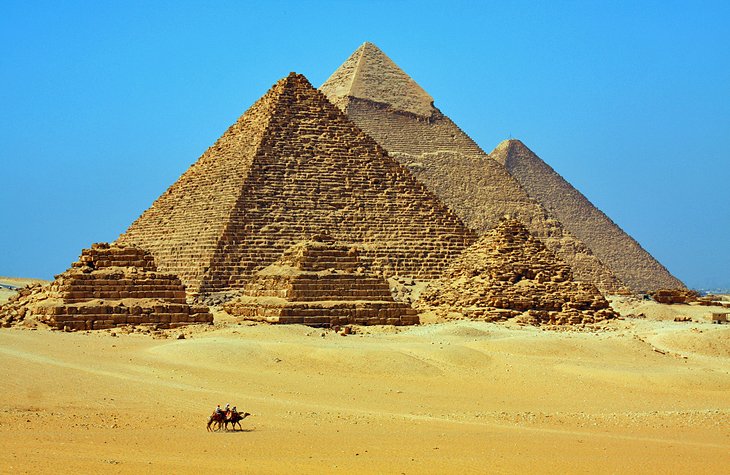Cairo
Description
Cairo is not a Pharaonic city, though the presence of the Pyramids leads many to believe otherwise. At the time when the Pyramids were built, the capital of ancient Egypt was Memphis, 20km southeast of the Giza Plateau.
The foundations of Cairo were laid in AD 969 by the Fatimid dynasty, but the city’s history goes further back than that. There was an important ancient religious centre at On (modern-day Heliopolis). The Romans built a fortress at the port of On, which they called Babylon, while Amr Ibn Al As, the general who conquered Egypt for Islam in AD 642, established the city of Fustat to the south. Fustat’s huge wealth was drawn from Egypt’s rich soil and the taxes imposed on Nile traffic. Tenth-century travellers wrote of public gardens, street lighting and buildings up to 14 storeys high. Yet when the Fatimids marched from modern-day Tunisia near the end of the 900s, they spurned Fustat and instead set about building a new city.
Construction began on the new capital when the planet Mars (Al Qahir, ‘the Victorious’) was in the ascendant; thus arose Al Madina Al Qahira, ‘the City Victorious’, the pronunciation of which Europeans corrupted to Cairo.
Many of the finest buildings from the Fatimid era remain today: the great Al Azhar Mosque and university is still Egypt’s main centre of Islamic study, and the three great gates of Bab An Nasr, Bab Al Futuh and Bab Zuweila straddle two of Islamic Cairo’s main thoroughfares. The Fatimids did not remain in power long, but their city survived them and, under subsequent dynasties, became a capital of great wealth, ruled by cruel and fickle sultans. This was the city that was called the Mother of the World.
Gallery




